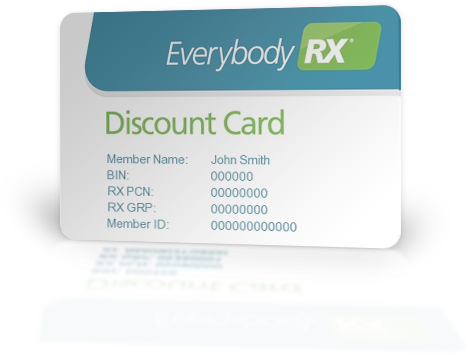From the cost of researching and producing new prescription grade medications to the ongoing price battle between drug companies, there are dozens of factors contributing to the high price of prescription medications. While these high costs may seem challenging—and in some cases even overwhelming—prescription discount cards provide a solution that can help you keep your prescription medication prices within the limits of your bank account.
How much is being spent on prescription medications?
In 1990, Americans spent approximately $40 million on prescription medications. By 2012, that amount had risen to $325.8 billion, and by 2020 annual spending on prescription medications is expected to exceed $512 billion (that is, for anyone who’s counting, just shy of the annual contributions by the US to the war on Afghanistan). There are, however, solutions, like the prescription discount card, available which may help to prevent our annual prescription expense from hitting that $512 billion mark—or from equalling the amount the US government spends on war (after all, it really wouldn’t look right if the two main expenditures in the United States were war and pharmaceuticals).
Why are prescription medications so expensive in the first place?
There are a number of factors driving the prices of prescription drugs up. To start, research facilities face tremendous financial pressures and expenditures during the research and development process of new prescription drugs. Millions of dollars are invested into a new product before it can even go through for assessment. If it goes through all of its stages of development, and then is not approved by the FDCA, those millions of invested dollars are lost. Thus research facilities set a specific fee on their new substances, and any extra proceeds are put towards recovering the losses from unapproved products, as well as towards the future research and development of new medications.
While the cost of research and production accounts for a reasonable portion of the high cost of prescription medications, it still does not explain why the cost of the same medications is so much higher in the United States than it is in some other countries. The main influences in this issue are the US’s multiple drug companies. In some other countries, the government purchases prescription medications in bulk, eliminating the price competition which exists between such drug companies as those within the US. In the US, on the other hand, multiple drug companies purchase specific medications, causing the prices to climb between companies.
With the costs of research as well as the ongoing price battle between different drug companies, the cost of prescription medications is forecasted to continue to rise; however, there are ways to combat that high expense without having to take out a mortgage—or sell a kidney. Prescription discount cards, and other programs put in place by the Patient Assistance Network, are designed to help make the cost of prescriptions more affordable for the people who need them.
What are the benefits of using drug discount cards?
There are many benefits to using a prescription discount card, the foremost being the reduced cost of many prescription medications. Prescription or drug discount cards provide access to pre-negotiated rates for medications, which means your discount card could gain you access to up to 80% discounts in your prescription medication. Drug discount cards are also beneficial because you do not have to have medical insurance, nor do you need to file a claim to receive your discount. No personal information is required, and in some cases the card can count against your deductible. Finally, drug discount cards can ensure you pay the same price when the cost of your prescription goes up.
Are drug discount cards worthwhile?
Research shows that approximately 70% of Americans take at least one prescription medication. Nexium, Crestor, and Advair Diskus are three of the top four most purchased prescription medications in the US. Nexium currently retails for $293.00/bottle, accounting for $6.0 billion in annual US pharmaceutical expenditure. With the prescription discount card, it is valued at $240.89/bottle, a 17.78% discount that saves $52.11/bottle, and could potentially save a net $1.07 billion. Similarly, Crestor, retailing for $238.00/bottle, is eligible for a 21.87% discount, saving $52.04/bottle and $1.1 billion net. Advair Diskus retails for $354.00/bottle, and could receive an 18.73% discount, saving $66.29/bottle and $918 million net.
This article was written by James Sosa, a healthcare writer, who believes that a Drug Discount Card offers a win-win situation for both customers and pharmacies.
